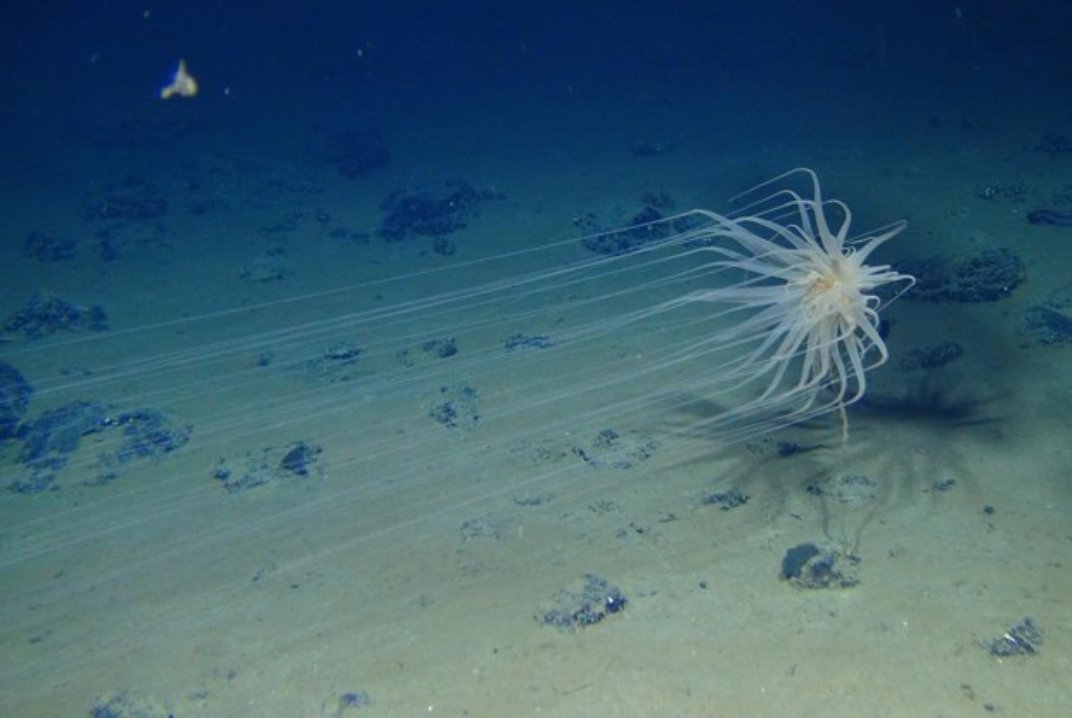Future Deep Sea Mining Sites Are Bursting With Rare Marine Species
The area is full of rare metals, but a new study shows it's a hub for deep-sea diversity, too

Not much is known about the Clarion-Clipperton Zone (CCZ), a swath of seabed in the South Pacific between Hawaii and California the size of the continental United States. What researchers do know, however, is that the area is loaded with “polymetallic nodules,” made up of valuable metals like copper, nickel, cobalt and manganese. That’s why nations and companies from around the Pacific are gearing up to start mining the sea floor, laying claims to sections of the CCZ.
But before any mining happens, researchers from the University of Hawaii at Manoa are conducting a baseline survey to find out just what kind of biodiversity exists in the CCZ. There’s a reason the area is little known. Maddie Stone at Gizmodo reports that at an average depth of 13,000 feet, the zone is under complete darkness, crushing pressure and almost freezing temperatures. “At first glance, the abyssal environment doesn’t seem to have a lot of animals,” Diva Amon, a marine biologist on the team, tells Stone. “The stereotype is that it’s like a desert. We’re finding that’s not the case at all.”
Amon and her colleagues used an ROV to assess 350 square miles of the CCZ in 2013, then analyzed the photographs to get a handle on the megafuana—animals greater than 0.78 inches—in the area. What they found is that the CCZ is chock full of life. “We found that this exploration claim area harbors one of the most diverse communities of megafauna to be recorded at abyssal depths in the deep sea,” Amon says in a press release. Many of the creatures photographed are new species and were recently described in the journal Scientific Reports.
Amon says that the highest diversity of marine animals occurred among the polymetallic nodules. “[M]ore than half of the species seen rely on the nodules—the very part of the habitat that will be removed during the mining process,” she says.
Craig Smith, lead researcher on the project tells Brooke Jarvis at Pacific Standard that during a follow-up survey in the CCZ, his team saw 1,000 species, about 90% of them previously unknown and all of them in an area leased for mining exploration.
This study is just the first that will appear based on the survey, which was part of the ABYSSLINE project, which collects baseline data on deep ocean habitats like the CCZ. Stone reports that the researchers are looking at data from a second sea floor survey conducted in 2015. They are also analyzing DNA from new sea creatures they collected and are studying the microbial communities of the sea floor as well. The researchers hope to conduct two more expeditions to the CCZ.
“We can’t manage what we don’t understand and we can’t protect what we don’t know,” Amon tells Stone. The hope is that once the baseline project is finished, the information will be used to create mining practices that disrupt the habitat as little as possible.
Read more: http://www.smithsonianmag.com/smart-news/future-deep-sea-mining-sites-are-full-new-ocean-species-180959981/#CFlyqVH0SMdOZ5R4.99
Give the gift of Smithsonian magazine for only $12! http://bit.ly/1cGUiGv
Follow us: @SmithsonianMag on Twitter